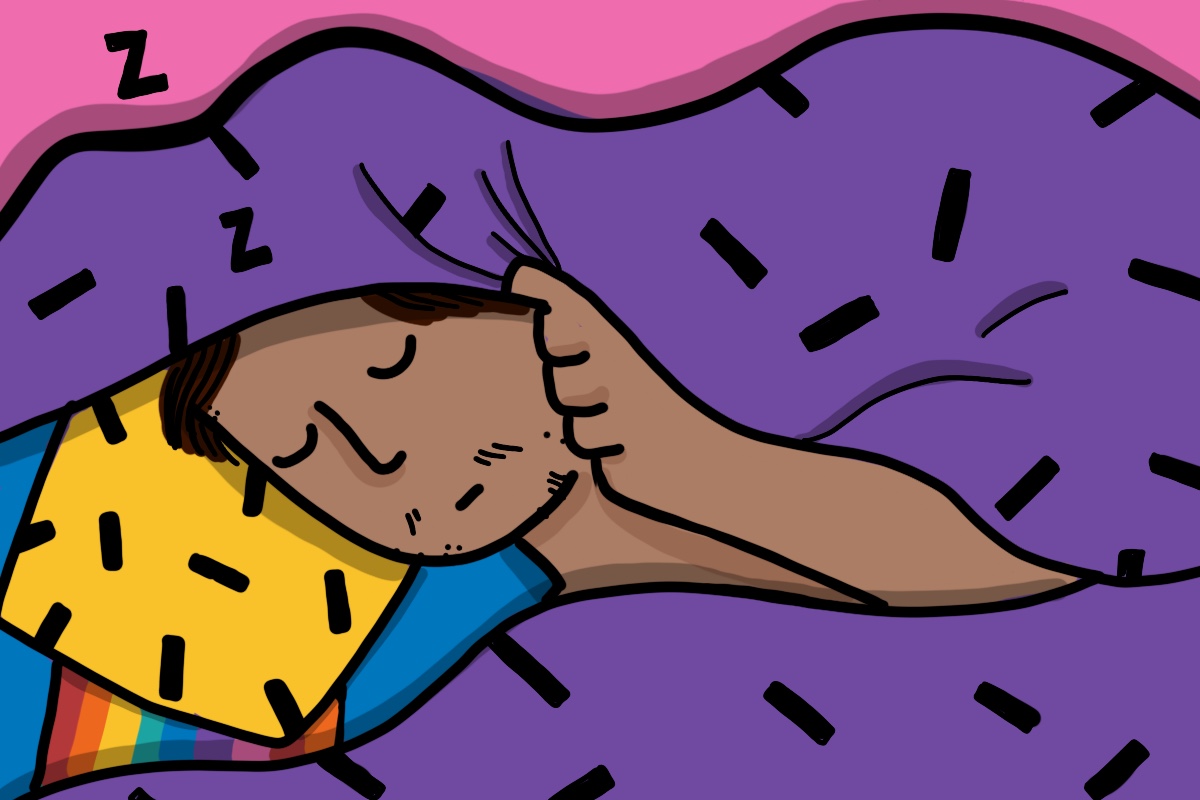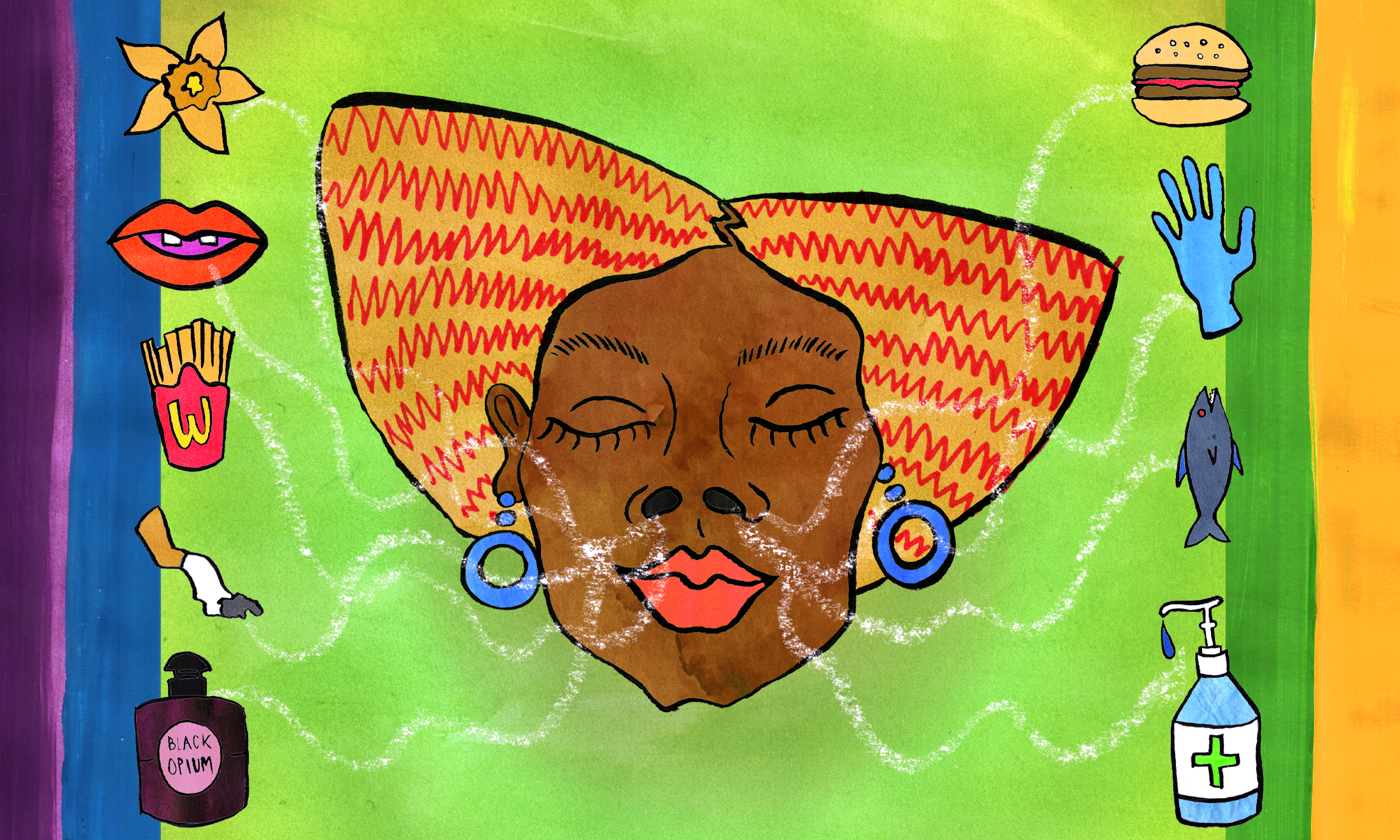
This is how you can have lucid dreams during lockdown
We've all been having weird lockdown dreams. Instead of battling through unsettling scenarios, lucid dreaming can allow you to become aware that you're dreaming, control your dreams and escape your nightmares.
Micha Frazer-Carroll
26 Apr 2020
In addition to the outbreak of a global pandemic and the enforcement of international lockdown, something strange is happening across the world. When the sky falls dark and we switch out our lights to go to sleep, something odd is taking hold – not of our bodies, but our minds. You know what I’m talking about: funky dreams.
While there is evidence that women of colour can have a heightened struggle to get a good night’s rest, a lack of sleep, and weird dreams if we do get to sleep, have been a widely reported phenomenon over the past few weeks in all communities, with a slew of explainers and expert comments on why we’re dreaming more vividly than ever before. I haven’t been immune to them either – having woken up in a pile of my own sweat or tears at least a couple times a week since lockdown was announced. But the funkiness of my dreams has got me thinking more broadly about the untapped potential that lurks beneath the dense canopy that is our conscious minds.
For those who are trapped inside all day during lockdown, you might say our best opportunity to practise some escapism is while we’re unconscious. You may have heard of lucid dreaming – a state where, whilst asleep, you become aware that you are dreaming, often leading to the ability to control your own dreams. I don’t know about you, but to me, it sounds like the ultimate fantasy: the dream train going full-steam ahead and you sat in the driver’s seat.
Lucid dreaming is generally regarded as a safe, free and substanceless means of engaging in something incredibly pleasurable, creative and borderline psychedelic. At a time like this, adding a bit of fun to these small, seemingly mundane activities has the potential to make everything that tiny bit more bearable – so why not give it a go?
I had a brief flirtation with the phenomenon during my teenage years but decided that I want to get back into the practise of lucid dreaming during my time in lockdown. I’m only in the early stages of refining my technique but wanted to compile a thoroughly-researched, practical guide to lucid dreaming, for anyone who’s interested in getting started with me.
This collection of strange yet broadly convincing techniques, which are best used in conjunction with each other towards the goal of having lucid dreams in lockdown. Most, if not all of these techniques, require practise and a bit of dedication, but if you commit, your world of possibilities will be opened up far beyond the confines of your home – you can fly, go on a rollercoaster, run through a field of wheat, ride a unicorn or hook up with a hot imaginary new boo.
Check-in on reality
First thing’s first: let it be known that you’re never going to lucid dream if you don’t become aware that you’re in a dream in the first place. One German study showed that people who were more reflective in their day-to-day lives were more likely to be able to lucid dream. This shouldn’t be surprising; lucid dreaming hinges on critical thinking – having that lightbulb moment where you clock on to your subconscious state, and decide to make the most of it. The best way to do this is by conducting habitual reality checks.
Remember that scene in Inception where Leonardo DiCaprio asks Ellen Page “how did we end up here?”, prompting her to realise that she can’t remember, and is therefore slap-bang in the middle of a dream? It’s questions like these – reality checks – that offer us the opportunity to realise we’re dreaming. Think about it: if Leo hadn’t asked her that simple question of how she got to the café they were sitting in, she may have never realised that she was in a dream. Similarly, think about the number of bizarre or nightmarish scenarios you mindlessly accept in your dream state, because dream-you never thought to ask yourself: “is there a chance this might not be real?”
But alas, it’s not a question we habitually ask ourselves, so we shouldn’t expect it to be a gut reaction to ask it in a dream. Because our thought processes in dreams resemble our thought processes IRL, you need to regularly do reality checks in your waking life. Get into a routine of stepping back and asking yourself some questions about your perception a few times a day:
“Am I dreaming right now?”
“Is this real?”
“How did I get here?”
Beyond these questions, there are other telltale environmental cues you can interrogate to see if you’re dreaming. The physics of dream-world aren’t quite the same as the physics of the waking world (anyone who’s had a dream where they’re running away from something threatening will know this). So it’s worth getting into the habit of checking the following:
• Can you run? (in dreams, running usually feels slow, uncoordinated or disjointed)
• Do the light switches work? (lucid dream forums will tell you that switches themselves rarely perform their intended function in dreams)
• When you look in the mirror, do you see yourself? (again, many lucid dreamers will tell you that your reflection will always be off, inaccurate or sometimes frightening in your dreams)
• Try poking the palm of your hand with your finger – does it go through? (it should not, but in dreams, some claim it will)
Now, it’s worth bearing in mind that asking yourself these questions on the daily does have the potential to trip you out and make you feel a little off-balance or existential. This is an occupational hazard that you should consider seriously. But the primary goal here is not to alter our perception of reality, but simply to make a critical, interrogative thought pattern so ingrained that you perform the same sorts of checks in your dreaming life too. This will hopefully lead you to a lightbulb moment that allows you to lucid dream.
Stay in touch with your dreams
Alongside reality testing, the more time you dedicate to analysing and reflecting on your dreams, the more likely you are to notice more subtle cues that you are in a dream. In my opinion, recalling your dreams is also more broadly a part of getting your head in the game – you’re subtly reinforcing the idea that paying attention to your dreams is important and not pure folly.
The best way to do this is by keeping a dream journal. Dream journals can be a complex art form, but they can also be as simple as setting aside 10-15 minutes in the morning to write down everything you remember about the adventures of the night before. Over time, see if particular themes, structures or ideas re-emerge, and get to know what your dreams look like over time. For many of us, lockdown lie-ins offer us a ripe opportunity to dream journal, so the time has never been better to start.
Practise good sleep hygiene
Because lucid dreams are most likely to occur during Rapid Eye Movement (REM) sleep, which is longest during the final hour or so of your sleep cycle, you’re not going to be able to lucid dream if you’re not sleeping well, and sleeping fully. Getting around eight hours sleep will maximise your chances of lucid dreaming, as will all the usual things we’re told to do, like avoiding blue light before bed, sleeping in a dark, quiet setting, spraying lavender on your pillow – the whole lot. Brush up on sleep hygiene if you don’t know your stuff already.
Attempt the MILD technique
Lucid dreaming is under-researched in the field of psychology, partly because scientists understand so little about dreams in the first place, and it’s very difficult to induce a lucid state in a laboratory setting. However, a 2017 study found rigorous evidence for the efficacy of a technique dubbed the Mnemonic Induction of Lucid Dreams (MILD), which involves disrupting your sleep cycle. As described by the lead researcher, the technique is as follows:
“1. Set an alarm for five hours after you go to bed.
2. When the alarm sounds, try to remember a dream from just before you woke up. If you can’t, just recall any dream you had recently.
3. Lie in a comfortable position with the lights off and repeat the phrase: ‘Next time I’m dreaming, I will remember I’m dreaming.’ Do this silently in your mind. You need to put real meaning into the words and focus on your intention to remember.
4. Every time you repeat the phrase at step 3, imagine yourself back in the dream you recalled at step 2, and visualize yourself remembering that you are dreaming.
5. Repeat steps 3 and 4 until you either fall asleep or are sure that your intention to remember is set. This should be the last thing in your mind before falling asleep. If you find yourself repeatedly coming back to your intention to remember that you’re dreaming, that’s a good sign it’s firm in your mind.”
I know a lot of people have an aversion to repeating mantras to induce behavioural change – it can sound a bit like quack science. But in the study of 169 people, over half were able to have a lucid dream using the technique. This is statistically significant and makes it perhaps the best-evidenced technique for lucid dreaming. The only drawback is that your disrupted night’s sleep might mean being a little bleary-eyed in the morning – but you get half a night’s worth of free reign over your dreams as a compensatory treat.
Simply try going back to sleep
You know when you begin to wake from the best dream of your life to the sobering sound of your phone alarm buzzing in your ear, and all you can think is “I wish I could go back in?” Again, lockdown has given many of us more flexibility for lie-ins, so why not actually have a go at diving head first back into your dream? This technique isn’t as well-evidenced, but as this phenomenon does usually occur at the very end of the longest phase of REM sleep, it’s reasonable to assume that your chances of lucid dreaming are maximised. Close your eyes and allow yourself to slip back into the fantasy, with the conscious awareness that you are entering into a dream state where you can pull the strings.









